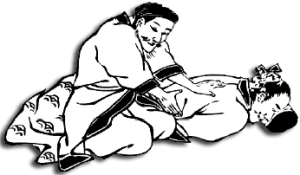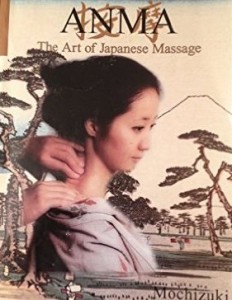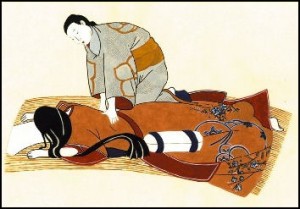 按摩 Anma is an ancient style of Japanese massage with powerful results. Developed over centuries, the art originally came to Japan from China in the sixth century AD. During Shogun rule, Anma was integrated into martial art teachings. Samurai were not only educated in the martial arts, but also the healing arts as well. Fellow warriors had the ability to assist injured comrades in the field. The same acupoints used to disable an opponent can also be used to heal. Medical practitioners of the day integrated techniques specifically developed for samurai needs into Chinese Anmo and reached it’s height of popularity during the Edo period (1602-1868).
按摩 Anma is an ancient style of Japanese massage with powerful results. Developed over centuries, the art originally came to Japan from China in the sixth century AD. During Shogun rule, Anma was integrated into martial art teachings. Samurai were not only educated in the martial arts, but also the healing arts as well. Fellow warriors had the ability to assist injured comrades in the field. The same acupoints used to disable an opponent can also be used to heal. Medical practitioners of the day integrated techniques specifically developed for samurai needs into Chinese Anmo and reached it’s height of popularity during the Edo period (1602-1868).
Unlike most Western and European massage, oils and lotions are rarely used and traditionally performed fully clothed giving the receiver an increased sense of security. It is however, perfectly suited for bare skin application. Utilizing a series of nine foundation techniques, the practitioner is able to warm, knead, stretch, and move tissue and bones back into proper alignment and working order. Included in the Anma repertoire are:
- Kei Satsu Ho – Light stroking techniques
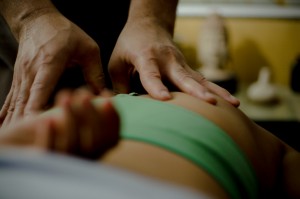
- Ju Neetsu Ho – Kneading techniques
- Shin Sen Ho – Vibrating techniques
- Ap Paku Ho – Pressure techniques
- Ko Da Ho – Percussion techniques
- Kyoku Te Ho – Special percussion techniques
- Un Do Ho – Movement, stretching, and exercise techniques
- Kyo Satsu Ho or An Netsu Ho – Stroking or rotating techniques with pressure
- Ha Aku Ho – Gripping and squeezing techniques
Check the EVENTS page for class schedule.
Anma Level I – Foundations of Japanese Massage
This massage course focuses on the history, philosophy, theory and practice of Meridian Therapy and Japanese Massage. There is an overview of the 12 primary channels and the 2 governing vessels, as well as the acu-points, which are commonly used in bodywork. The principles and application of Anma are explained and demonstrated. This course is also designed to focus on a wide range of techniques and clinical applications of massage therapy that can be used as a preventative treatment or to assist those suffering from common ailments.
Upon completion of this course, students will be able to
- Demonstrate proper stances and body ergonomics for performing Anma table massage.
- Effectively perform application of 100 techniques in 7 categories for the prone and supine positions.
- Explain tradition and philosophy of Japanese massage.
- Effectively screen clients to determine contra-indications.
- Build a customized kata (routine).
Anma II – Seated and Side Position
This course builds on Anma I utilizing the fundamental techniques for use in seated and side positions. This serves as an introduction to pregnancy and geriatric massage and for people who cannot lay on their stomach or back. Sitting position is the most common traditional position for Anma. A major benefit in learning these positions is the ability to perform Anma anywhere, anytime, and on almost everyone. Students will also receive a brief introduction to Japanese Chair 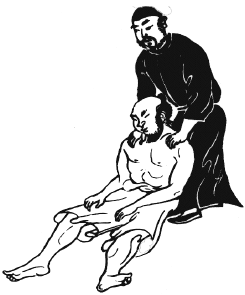 Massage.
Massage.
Objectives:
Upon completion of this course, students will be able to
- Demonstrate proper stances and body ergonomics for performing Anma seated and side positions massage.
- Effectively perform application of 75 techniques in 7 categories for the seated and side positions.
- Properly support client’s body during application for side and seated positions
Anma III – Advanced Apprenticeship Clinic (Mastery Level)
The Advanced Apprenticeship Clinic is designed for the student who desires ongoing coaching to hone and develop skills and gain mastery in the application of Anma techniques. These are customized 1-on-1 or 1-on-2 private clinics and must be requested by the students. Available in-person or via Skype.
* A technique reference manual will be provided with the class. A pictorial manual from Shogo Mochizuki is recommended for reference, available for purchase on Amazon. If you cannot find a copy of the out of print manual, call for alternatives.

